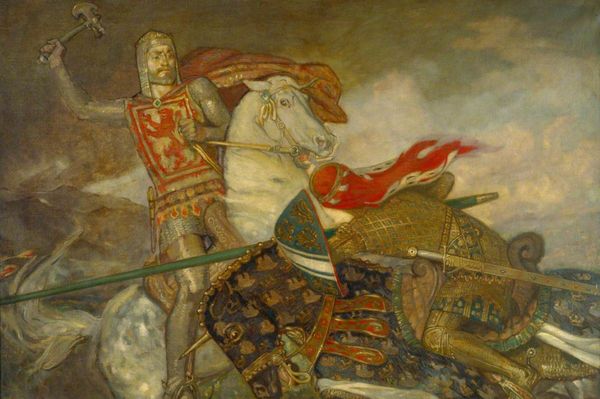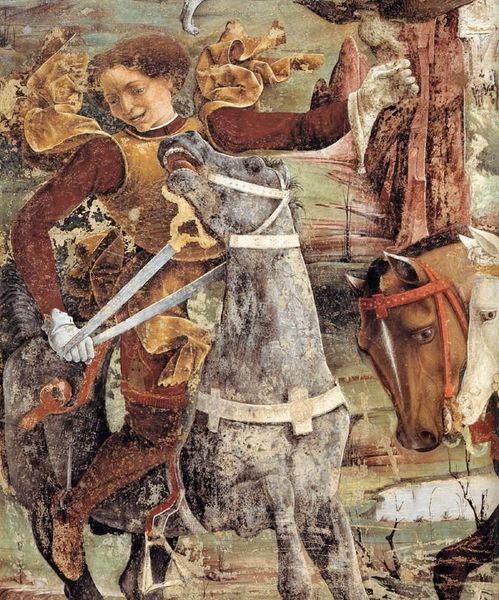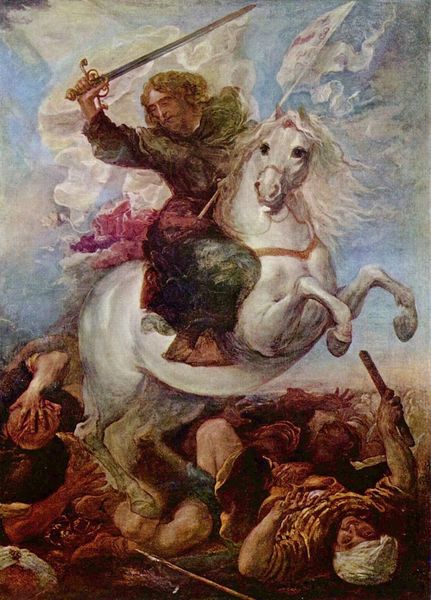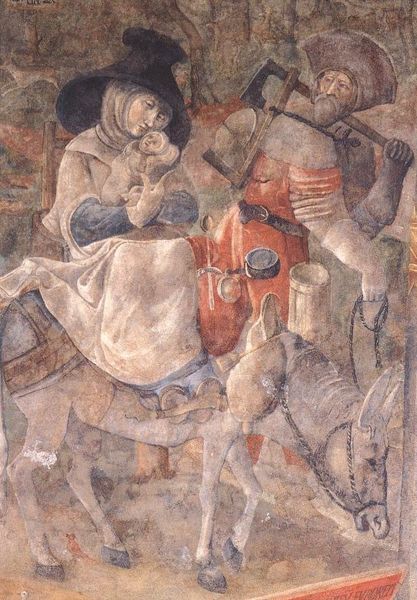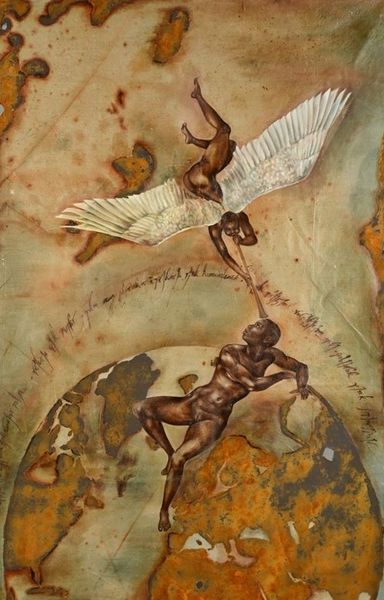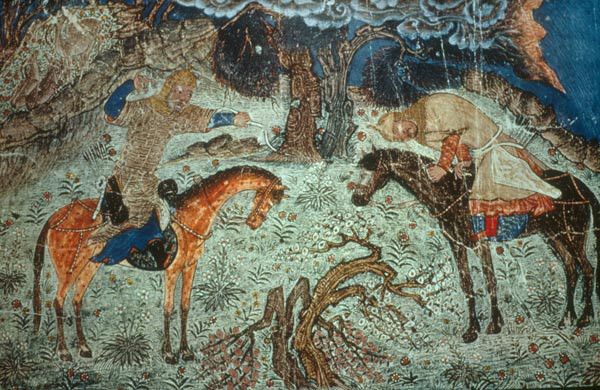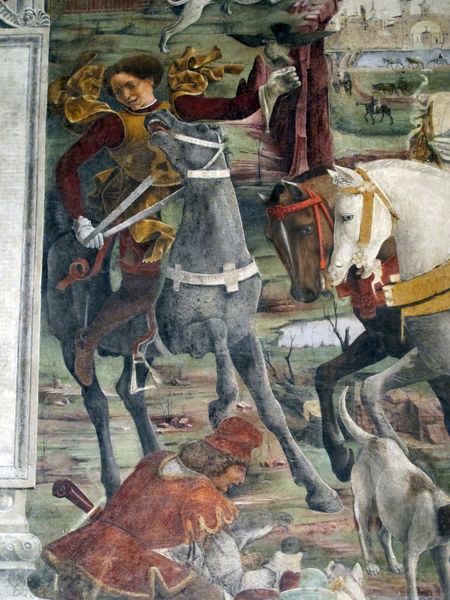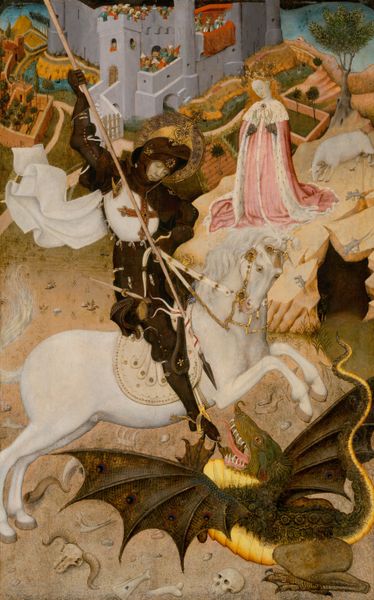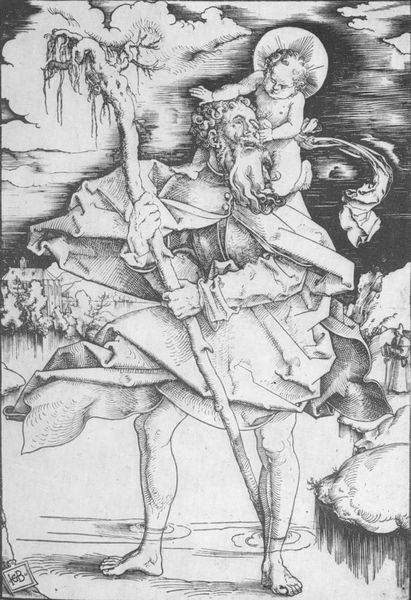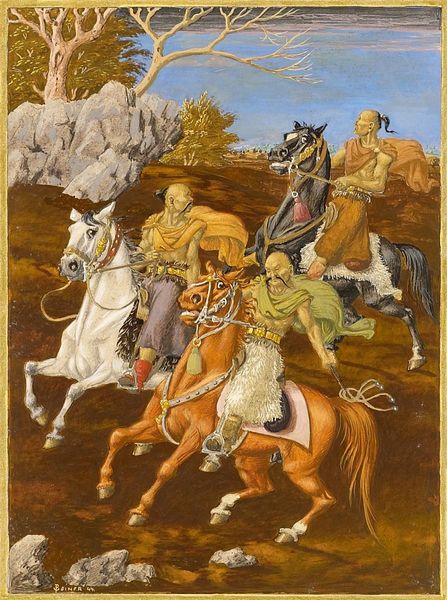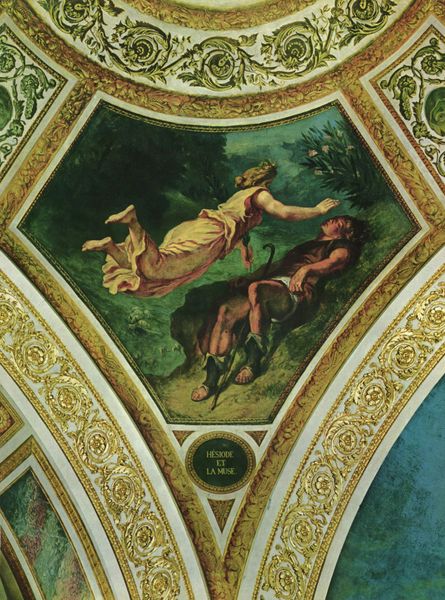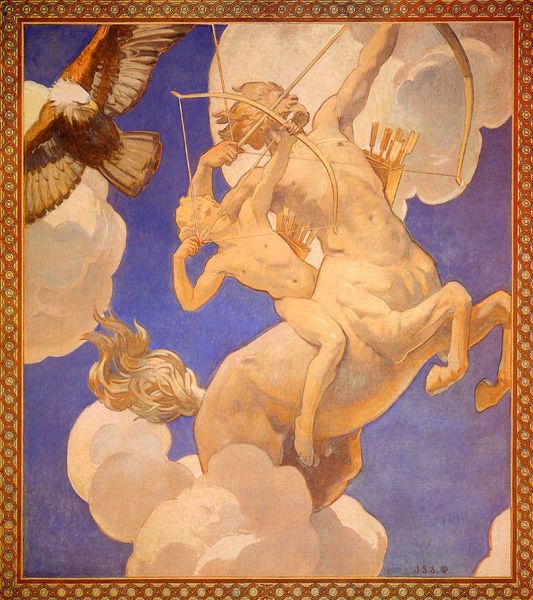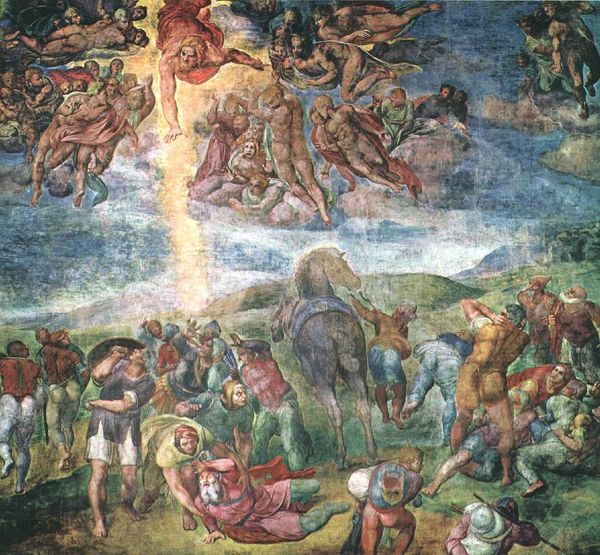
Copyright: Public domain
Editor: Kustodiev's "Peter the Great," painted in 1911 with oil, depicts the Russian Tsar astride a horse, seemingly emerging from a theatrical backdrop. There's something dreamlike and grand about it, almost like a stage set. What's your take on this rather unique portrayal? Curator: It's crucial to consider the social and material context. 1911 Russia was a society in transition. The use of oil paint, a relatively accessible medium by then, speaks to the evolving means of artistic production and consumption. Look closely at the surface. Does the handling of the paint, almost blurring the lines between 'high art' and craft, challenge conventional portrayals of power? Editor: I see what you mean! It’s not the slick, polished kind of history painting you might expect. There’s something almost folk-arty about the brushstrokes, and how the angel feels pulled from traditional russian decorative craft. So you are thinking of the availability of materials when you look at this work? Curator: Absolutely. The accessibility of materials shapes artistic output. Kustodiev's choice wasn't just aesthetic. It reflects the changing landscape of art production. And consider labor. The creation of art wasn’t separate from other forms of work. Does the "handmade" feel bring "Peter the Great" closer to folk craft production? And what about its accessibility? Editor: That makes perfect sense. I hadn’t considered it that way before. So, rather than a straightforward heroic image, Kustodiev's "Peter the Great" can be seen as reflecting shifts in material culture and artistic labour during its time? Curator: Precisely. It compels us to re-evaluate the very idea of "grand history painting," considering what materials were readily available, and who had access to art at that time, shaping both production and reception. It forces us to think, what really goes into making an image?
Comments
No comments
Be the first to comment and join the conversation on the ultimate creative platform.
